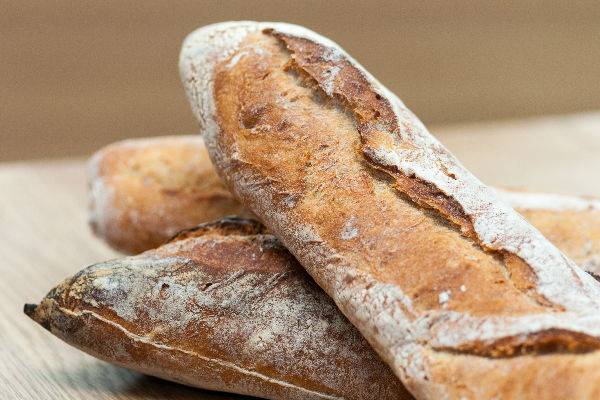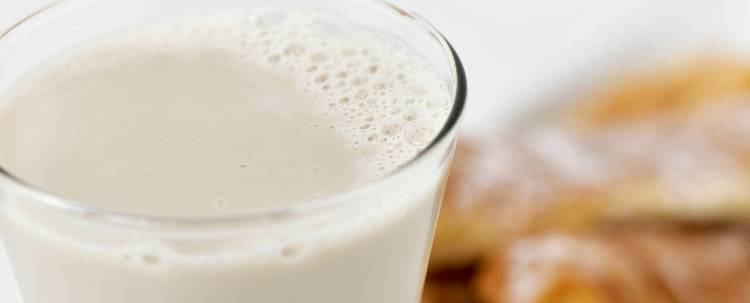Types of bread
Flour, water and yeast. These three simple ingredients, combined with each other have resulted in one of man's basic food for centuries. Bread is one of the basics of a traditional diet on most continents. Up until a few years ago buying bread in our country meant only being able to choose between two or three types, but nowadays there is a much greater variety on offer.
how to shop
Share

For centuries bread has been the basis of the diet for most civilizations, both for its nutritional characteristics, as well as for the ease which its main ingredient (cereals) is obtained. Bread occupies the base of the nutritional pyramid as it is responsible for covering a large part of the energy requirements of the organism.
There are countless varieties, depending on the type of cereal used. Although different types of bread can also be classified by their shape, weight or origin, such as baguette, ciabatta or rustic-style bread.
Its fundamental ingredients are flour, water and yeast. Although wheat flour has traditionally been used in Spain, bread can be made with other ground cereals such as rye, barley or maize. Yeast is used to ferment the dough and produce a lighter bread, giving it that spongy feel.
Here we review some of the traditional breads and others that have become popular in recent years, becoming part of our daily diet.
White bread
White bread is the best known and most commonly consumed. It is made with refined wheat flour, from which the bran has been removed and also the germ in many cases. It provides more energy than wholemeal bread, contains less fat per serving and lasts longer than other loaves.
Wholemeal bread
It is made from unrefined flours, made with the grain of the whole cereal conserving all the vitamins, minerals and fibre. The glycaemic index of wholemeal bread is not as high as white bread, so it does not raise blood sugar and is also indicated for diabetics. It is good for preventing colon cancer, for treating constipation and for people with elevated cholesterol. Fibre-rich foods produce a sense of satiety, which decreases the feeling of hunger between meals.
Rye bread
This bread is made with rye flour. It has a darker colour than the classic wheat bread, so it is known as black bread in some places. Although it was considered to be a bread for poorer people in ancient times, nowadays it is much appreciated for the fibre it provides. It promotes intestinal movement, helps weight throug its satiating effect and it improves circulation. It is also recommended for people who suffer from diabetes.

Bread with bran
Despite its resemblance to wholemeal bread, we shouldn't confuse them. This bread is made with refined flour with added bran, so it is still white bread, but contains more fibre. It is recommended for people who suffer from constipation.
Cereal bread
Like bread with bran, this is made with refined wheat flour, to which other cereals are added, such as rye, oats, maize, barley, all of which makes it an important source of vitamins and minerals. It is highly appreciated by those who follow a vegetarian diet.
Corn bread
This product originates in the north of Portugal, and is also made in the south of Galicia. It's made with cornmeal. It does not contain gluten, so it is the ideal choice for celiac people, although it is sometimes mixed with rye and wheat.
Oat bread
One of the most nutritious and high-energy breads due to the presence of this cereal. Oat bread is rich in proteins, B group vitamins and minerals, especially magnesium, iron and calcium. It has a low gluten content.
Mould Bread
It is made from milk-fortified wheat flour and sugars are also usually added. Its characteristic shape is acquired by baking it inside moulds. It has more fats than traditional bread, so you can keep it for longer. It's perfect for people who have trouble chewing, as well as for children.
Toasted bread
The eternal favourite, white or mould bread which after being cut into slices is toasted until it is dehydrated. The fundamental difference is the moisture it contains, as all the water evaporates. When dried, the bread changes its texture, but the rest of the nutritional benefits are identical to those of white bread. This bread can be kept for long periods of time.
Spelt bread
Spelt is a less known variety of wheat, although has become quite popular in recent years. It is an excellent source of vitamin B2, manganese, magnesium, phosphorus and calcium. Their daily intake decreases cholesterol levels and causes fewer allergic problems than wheat. It is indicated for people who suffer from migraines, atherosclerosis or diabetes. Today it can be found in supermarket and traditional bakeries.
What is sourdough? It is a ferment made of flour and water. There are a multitude of yeasts and bacteria in flour that cause the fermentation of the dough spontaneously. Traditionally it was used to ferment bread, before the advent of commercial yeast. This form of fermentation provides a special flavour and aroma to the dough and helps to control its acidity. To make sourdough you need water and a cereal. Yeasts are usually present on the outside of cereal grains, so it works better to use whole wheat flour, since white flour does not posses these. |
Pecking toasts







